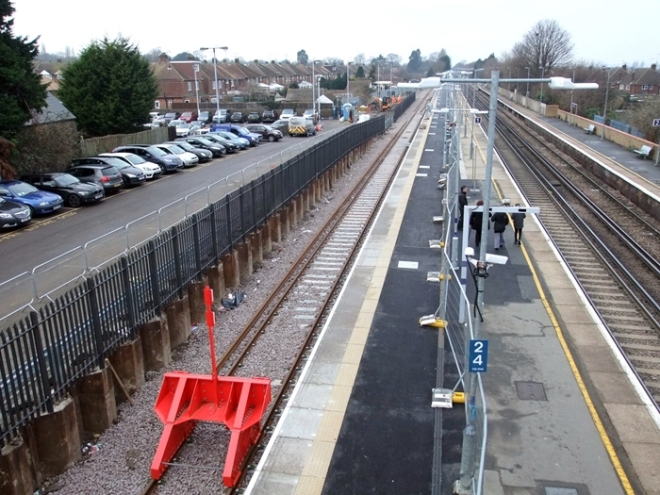On Wednesday 29th November 2017, the government of the UK announced its vision for the future of the UK rail network. After reading the publication myself, I will outline some of the proposals below. Note these are only proposals, even though much press speculation in the UK before this publication hinted at an actual announcement of line re-openings and the such, none were set in stone in the report.
The all important funding question had pretty much been answered in October 2017, when the government announced that £34.7bn had been set aside for funding between 2019-2024 (in England and Wales, Scotland provides any investment separately). This didn’t mean however that recently deferred projects, such as electrification would now go ahead. Instead the report says there is a need to “prioritise and invest in essential work on the existing infrastructure”. This may give some hope back to these projects, such as electrification to the south west line, but doesn’t specifically say so.
The issue of Network Rail, the organisation which looks after the infrastructure of the railway such as tracks and signalling was addressed. The overall impression given by the report is to try to make Network Rails’ operation more regional, instead of centralised. It is noted that this is where most problems have occurred because of the lack of local knowledge when planning engineering works. By working closer with the Train Operating Companies (TOCs) in their specific region, and giving more control to the local teams, it is hoped a more streamlined and efficient timetable of works can be achieved on time.
The report also touches on developments in track signalling. In what seems to be a hint at a major overhaul in the future, digital systems could be implemented. These include:
- c-DAS (connected-Driver Advisory System). A way to inform the driver en-route about potential route changes or speed restrictions in real time.
- ETCS (European Train Control System). Eliminates the need for trackside signalling, instead moving everything to the drivers cab.
Of the two listed above,, ETCS would only be implemented when current signalling comes to the end of their life. This would mean a long wait for such a system here in Kent, as we have only just seen the end of the East Kent Signalling project. However in 2015 funding was approved for ECTS signalling in Ashford, Kent, although an exact timetable is still to be approved.
With regard to “new” routes, the only concrete route planned is the previously announced restoration of service between Oxford and Cambridge, which will be undertaken by the East West Rail Company. Other routes are discussed very briefly and are still deemed to be in proposal stage. These include
- Bristol to Portishead
- Bristol to Henbury
- Exeter to Oakhampton
- Bere Alston to Tavistock
From a local point of view, many were hoping that the Uckfield to Lewes line would be mentioned in the report. It isn’t, however after a question by Lewes MP Maria Caulfield Chris Grayling replied that “I would be delighted to see the route reopened, and I hope that the consortium pursuing the project will prove successful.”. This presumably means that other national line reopening’s can be revisited, providing funding and feasibility can be achieved.
Ticketing was addressed in the report, with a definite lean towards “Smart Ticketing”, such as tickets on mobile. Smartcard technology for short distance journeys, such as TFL’s Oyster Card, could be implemented on some routes. Personally I still like a paper ticket, as the smart ticket relies on mobile connection and more importantly battery life!
It was good to see accessibility to the railway get a (albeit brief) mention in the report. Access for all to the rail network is essential for everyone, regardless of any disability. Not just step free access, but proper training for staff to deal with customers with accessibility needs.
Investment in Wi-Fi technology was also mentioned, with at least £35 million set aside for trials. Many networks do have Wi-Fi enabled trains, and it is good to see that investment here was forthcoming.
As far as the franchises go, the company which controls the much maligned Southern Rail, Govia Thameslink, could be broken up. Much has been said in the Media about this franchise, so my suggestion here is to access a search engine, read for yourself and make your own mind up! As far as my region, SouthEastern, is concerned, a new joint team of Network Rail staff and TOC will take responsibility. This is in conjunction to the paragraph earlier about Network Rail integration. The new franchise here is due to be announced in 2018. Other prospective franchises are detailed on page 36-38 of the report.
As a rail enthusiast, I have always felt that freight carried by rail is an integral part of the UK economy. I was therefore glad to see a continuation of 2016’s rail freight strategy in the report. This includes provision to provide funding for improvements to rail freight up to 2024.
In conclusion, the report does include many great ideas which, if implemented, will improve the UK Rail network. Integration between the TOCs and Network Rail is a sensible move, as is the proposed improvement to track signalling. It unfortunately stopped short of headline line re-openings, but did hint at willingness to do so.
The full report can be read HERE
Videos of mine can be found on my YouTube channel, Rainham Rail Enthusiast . Thanks for reading, I’ll blog again soon.

